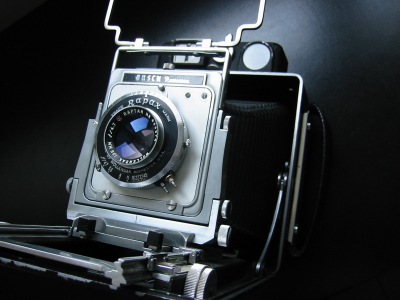
BUSCH
MODEL D
Busch Precision Camera Corporation Chicago 7
Press-CAMERAS

The Busch Model D with Vue Focus Rangefinder.
The Busch Model D was one of the finest Press Cameras on the market at that time. Although missing the Graflex focal plane shutter, it had the advantage of the smaller housing and a revolving back.
Remarkable is the design of the camera with the nice chrome front and beautiful crafted knobs and tracks, but for all the odd, alien Vue Focus rangefinder on top of the housing, which is completely different comparing to the side mounted Kalart Rangefinder on Graflex, Burke & James and also on the earlier Busch Press Cameras.
The camera is focused by turning the focus knobs on the drop bed. The range finder mechanism will be operated in such a way as to cause the image in the centrally located colored spot, to move horizontally. When the image in this area exactly coincides with the image in the larger area, the rangefinder will be in correct adjustment for that subject. To be sure you may check the focus of the subject on the ground glass.
The Vue Focus in / out focus image in the central located colored mirror in the view finder.
For trouble shooting of your Vue Focus click here.
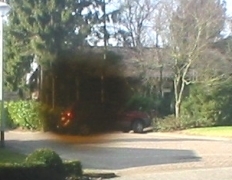
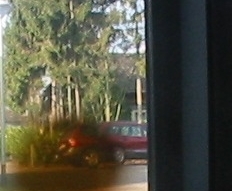
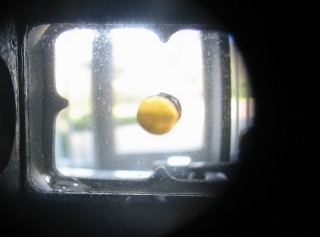

The mirror (a) which is controlled by a cam connected to the lensboard track, reflects a part of the subject image to the central mirror (b) in the view finder. Picture on the right shows the Vue finder with hat off. The right window is placed in front of the mirror (a). The left window is the view finder with the central located colored mirror. The middle window projects the light beam on the subject by night focusing.

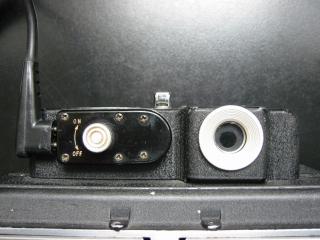
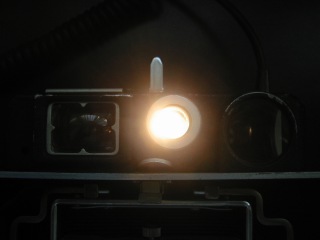
The switch equipped with a bi post terminal on the back side of the Vue Focus is powered by the Flash battery holder with a household plug connected to the battery output.
Unlike the Kalart rangefinder's "Focuspot", the Vue focus does not project two light beams to be superimposed on the subject, but just a light beam to illuminate the subject while focusing on it. As the light beam is not coupled to the focusing mechanism, focusing has to be done by using the Vue focus on the same way as during daytime.
One of the advantages of the Busch Pressman 4 x 5 is the Revolving Back. Just pull the lower knob and turn the back into a new position.
Landscape or Portrait.
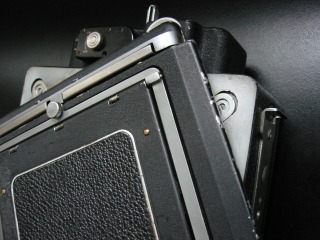
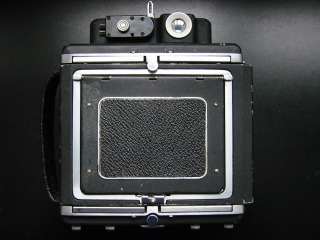
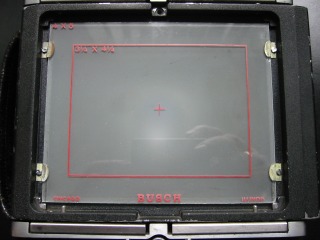
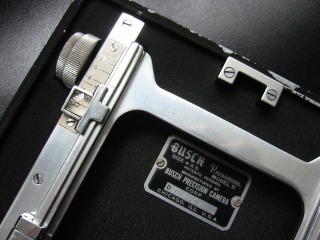
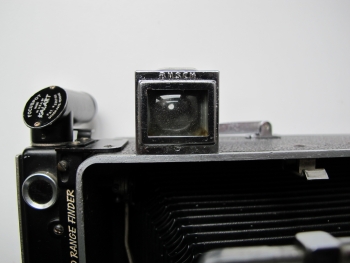
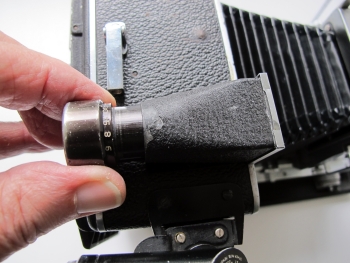
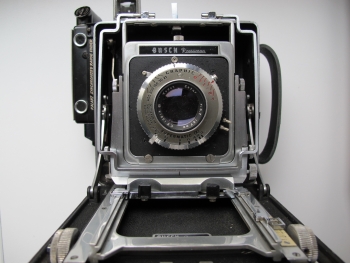
As an alternative to the Vue Focus Rangefinder,
the camera could be equipped with an eye piece viewfinder and a Kalart
rangefinder.
The eye piece viewfinder has a retractable tube for dioptre adjustment and by
turning the eye piece the parallax can be adjusted from infinity to 6 feet.
The Kalart rangefinder is coupled to the yoke on which the lens standard is
mounted. Adjust fine focusing with the focusing knobs -rack and pinion- until
the image in the circle of the eye piece coinside with the image in the larger
area of the Kalart eye piece. For focusing in dimmed light the Kalart "Focuspot"
is coupled to the mirror of the rangefinder and throws a light beam on the
subject. If both projected images coinside, the right distance to the subject is
set.
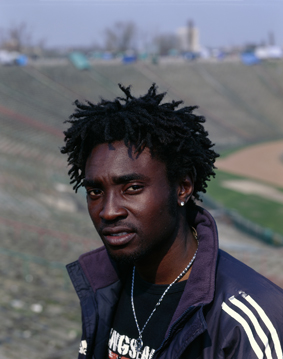
Photo by Federico Caponi Florence Italy.
1/30 - f 22 on Ektachrome 100 ASA. - Location Warsaw - April 2007.